
Perennial Forbs Around Las Vegas, Vegetation Around Las Vegas
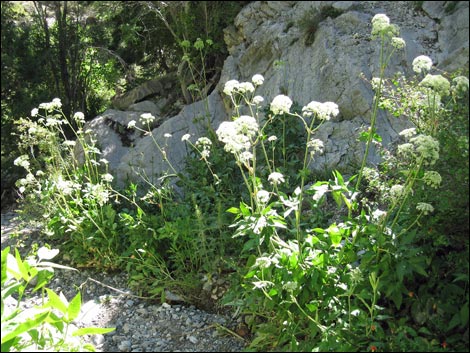 |
General: Charleston Mountain Angelica (Angelica scabrida) is an upright perennial forb (to 5-ft tall) with large, compound leaves (to 3-ft long) that are divided into three sets of three leaflet each. The inflorescence is a compound umbel, forming a big ball of white flowers. Oblong fruits can remain on old flower stalks. The petal-backs are scabrous (feel rough), and the fruits are 8-14 mm long. There are two species of Angelica in the Spring Mountains that look similar. Charleston Mountain Angelica, however, has leaves more coarsely divided and lighter green, and the petal-backs are scabrous. In contrast, King angelica (Angelica kingii) has leaves more finely divided and darker green, and the petal-backs are pubescent. Charleston Mountain Angelica is a rare component of mountain communities with damp or wet soils. Around Las Vegas, look for this species only in the Transition (Yellow Pine Forest), and Canadian (Pine-Fir Forest) life zones up on Mt. Charleston in Kyle Canyon and at Red Rock Canyon NCA in Lost Creek Canyon. Family: Parsley (Apiaceae) |
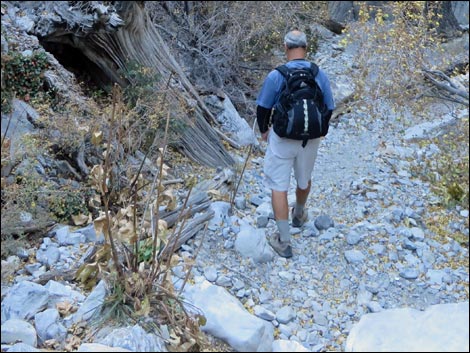 |
Other Names: Rough Angelica. Plant Form: Upright, herbaceous plant with large leaves. Height: To about 5 feet. Stems: Erect, roughened, pubescent, hollow at internodes Leaves: Compound (twice pinnate), divided into three sets of three leaflet each. Leaflets to about 15 inches long; ovate to lanceolate; margin serrate with small spines on the tips of each point. Glabrous. Flowers: Blooms in the spring. Inflorescence: compound umbels. Flowers white (sometimes pink, red, purple) with 5 petals and scabrous petal-backs. |
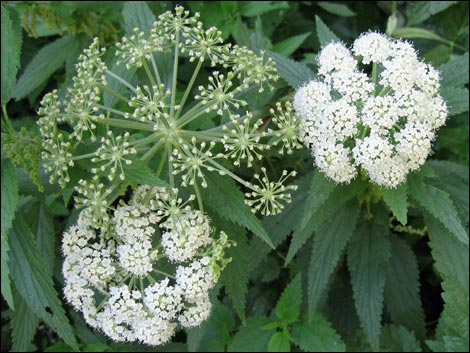 Inflorescence above Stinging Nettle leaves |
Fruit: Oblong; 2-seeded, flattened, slightly ribbed, 8-14 mm, narrow wings. Habitat: Damp and wet mountains limestone and sandstone soils.. Gravel washes, avalanche chuted, shady cracks. Elevation: About 4,300 to 9,350 feet Distribution: Endemic to the Spring Mountains. Only occurs on Mt. Charleston and at Red Rock Canyon NCA. Comments: USFS sensitive, USFWS and SMNRA species of concern, BLM Nevada Special Status Species, Nevada Natural Heritage Program sensitive with rank G2S2. |
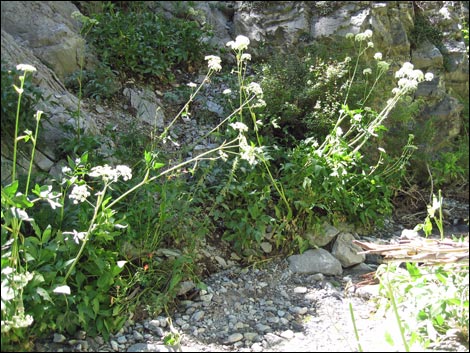 |
 |
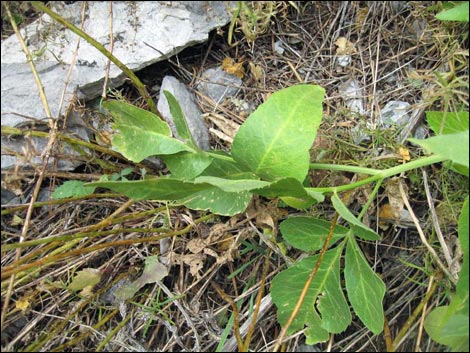 |
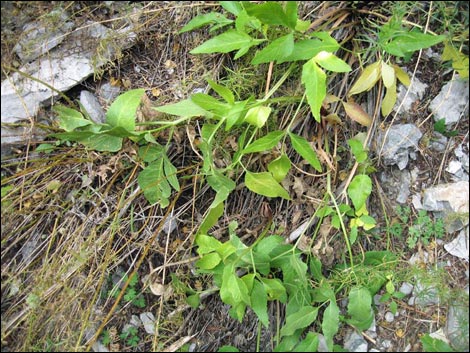 |
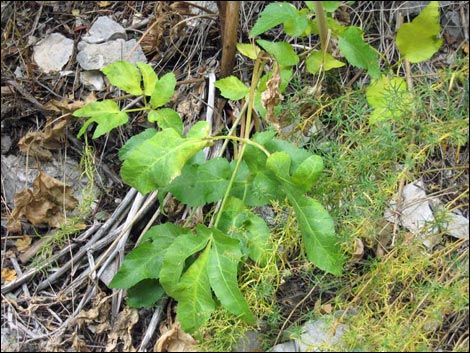 |
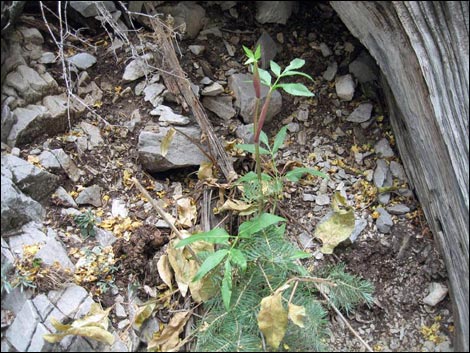 |
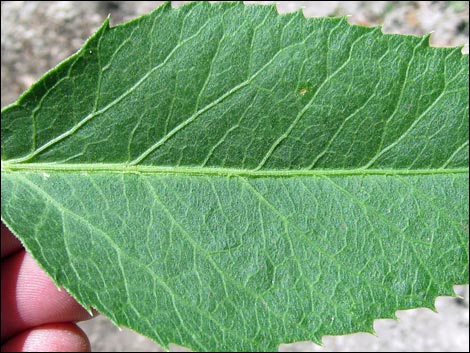 Upper leaflet surface |
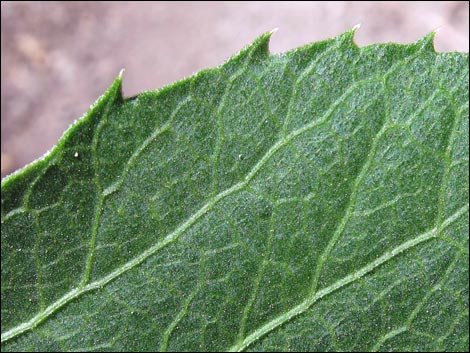 Leaf edge with spines (upper leaf) |
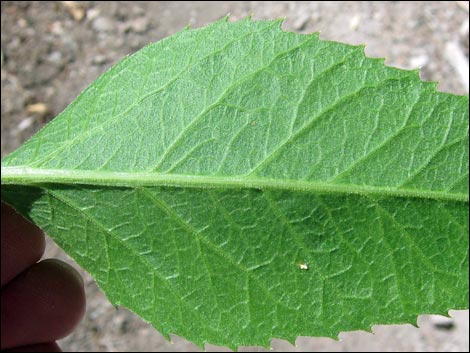 Lower leaflet surface |
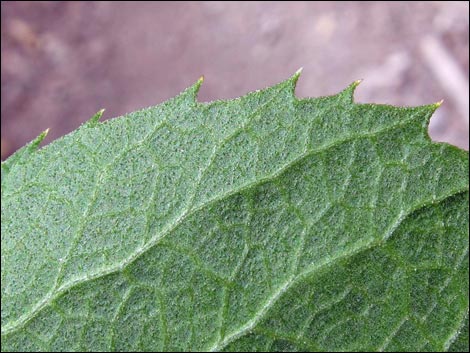 Leaf edge with spines (lower leaf) |
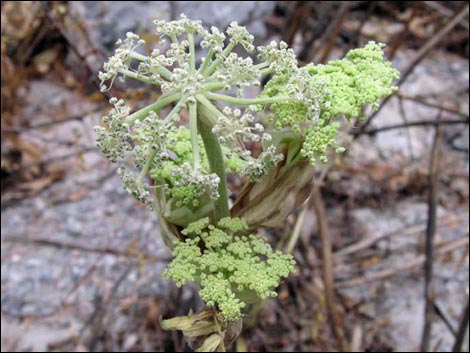 |
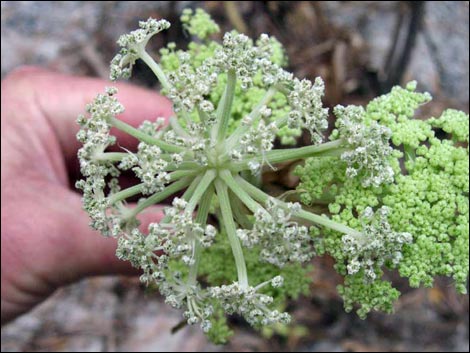 |
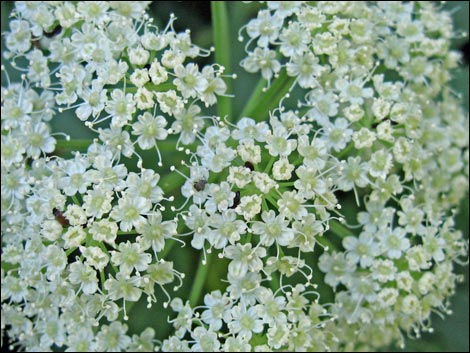 |
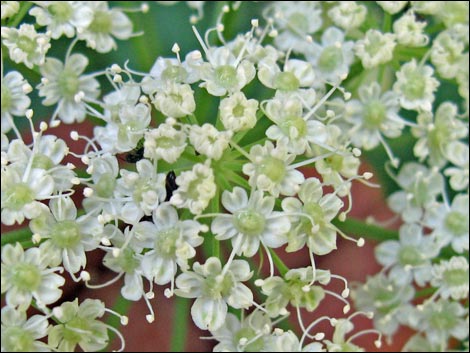 |
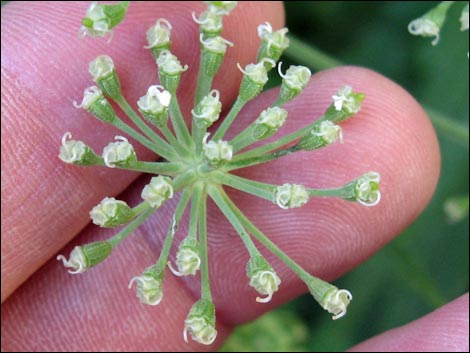 Wilted flowers and fruits starting to develop |
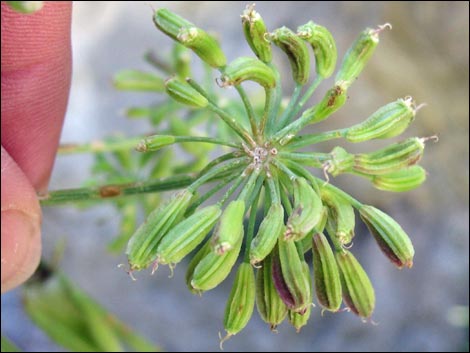 Fruits 8-14 mm long |
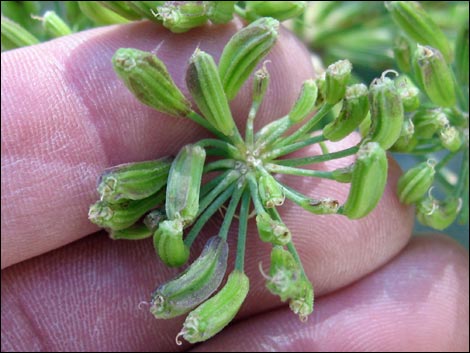 Fruits 8-14 mm long |
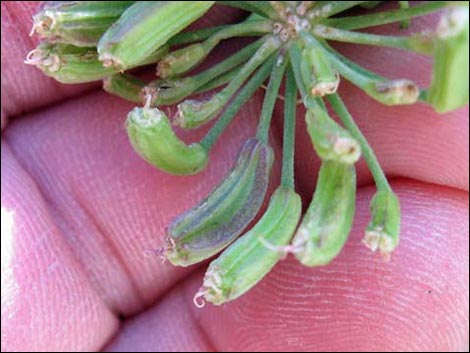 Fruits 8-14 mm long |
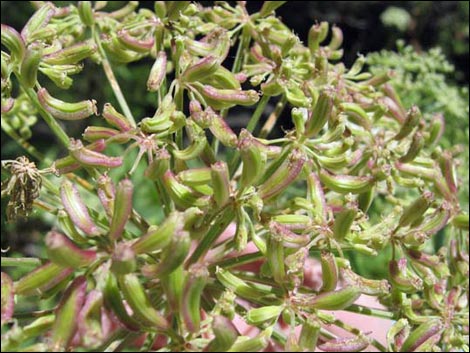 |
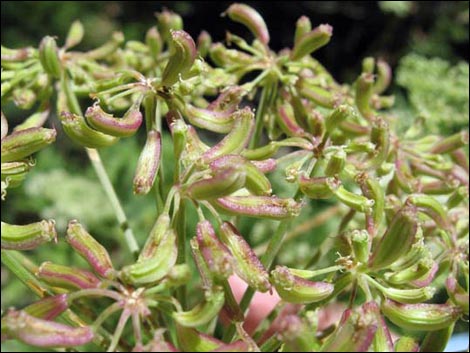 |
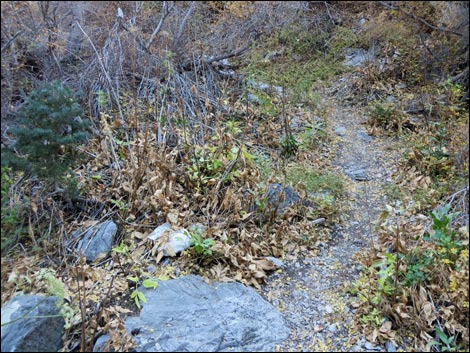 |
 |
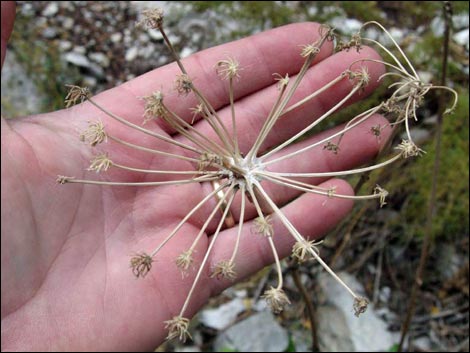 |
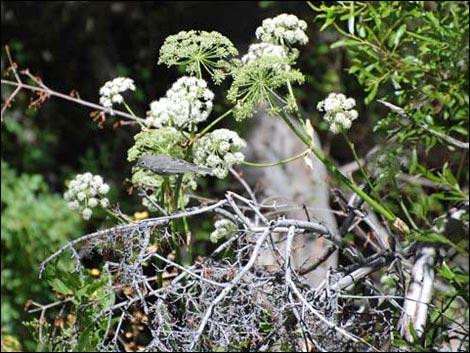 |
Note: All distances, elevations, and other facts are approximate. Names generally follow the USDA database.
![]() ; Last updated 240906
; Last updated 240906
| All Perennial Forbs | Plant Species Index | Glossary | Copyright, Conditions, Disclaimer | Home |